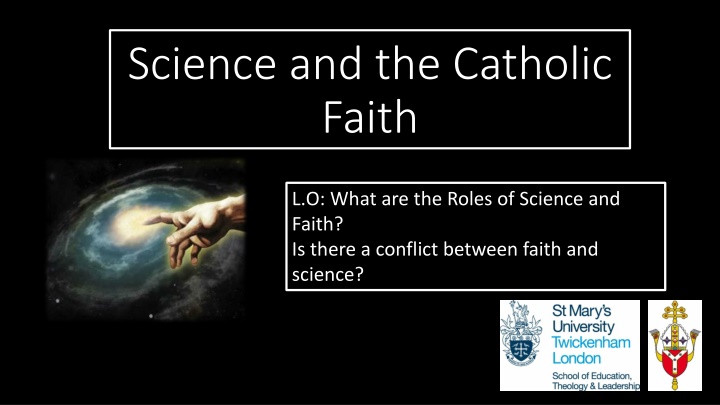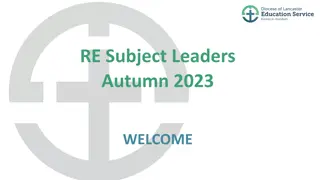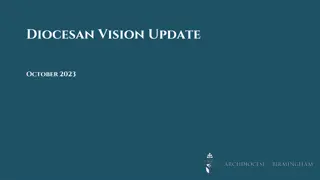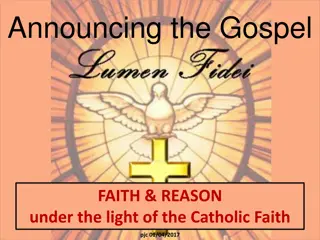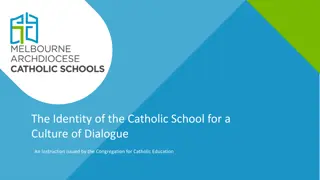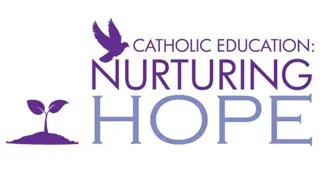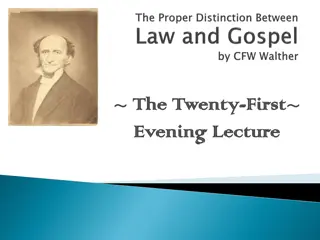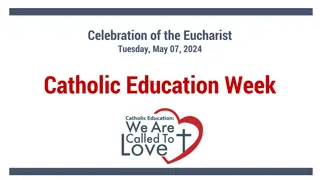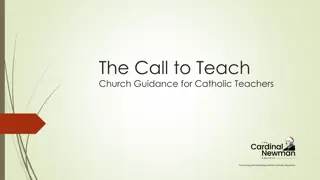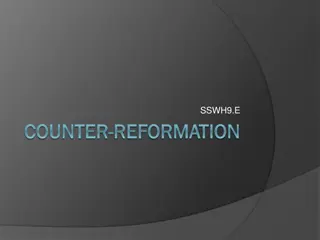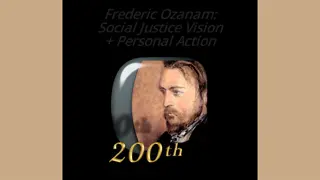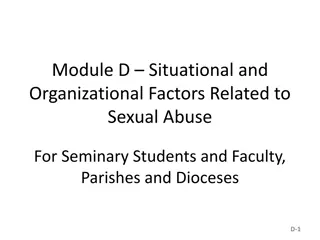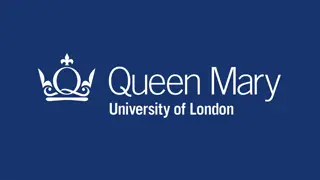Exploring the Relationship Between Science and Faith in the Catholic Context
Examining the roles of science and faith, this content delves into potential conflicts, the relevance of evidence in forming opinions, and the perceptions of Christian attitudes towards vaccinations. It challenges the notion of a conflict between science and religion by discussing creationism, scientism, and the need to avoid simplistic conclusions based on biased information.
Download Presentation

Please find below an Image/Link to download the presentation.
The content on the website is provided AS IS for your information and personal use only. It may not be sold, licensed, or shared on other websites without obtaining consent from the author.If you encounter any issues during the download, it is possible that the publisher has removed the file from their server.
You are allowed to download the files provided on this website for personal or commercial use, subject to the condition that they are used lawfully. All files are the property of their respective owners.
The content on the website is provided AS IS for your information and personal use only. It may not be sold, licensed, or shared on other websites without obtaining consent from the author.
E N D
Presentation Transcript
Science and the Catholic Faith L.O: What are the Roles of Science and Faith? Is there a conflict between faith and science?
In your booklets tick which of the following you agree with. Now look at your neighbours. Discuss where you agree and disagree. A. Science disproves religion B. Religion cannot teach you anything C. Religion is against new scientific discoveries D. You can t believe both science and religion E. You need religion to make this a better world F. You need science to make this a better world G. Science and religion are different ways of looking at the world, but both have something to teach us
Read the following extract What does this source imply about Christian attitudes to vaccinations?
But. Christian theologian Jonathan Edwards felt strongly about the small pox vaccination. He wanted all his pupils to be vaccinated. He himself a was given an early version of the vaccination and died as a result George Bernard Shaw was an influential (atheist) playwright in the early 20th century. He called vaccinations a peculiarly filthy piece of witchcraft. What do these sources suggest about basing our opinions on evidence presented to us?
Beware the Golden Thread! This article could be said to be guilty of following the golden thread to make certain conclusions about Christian attitudes to vaccinations There is a vast amount of material out there, sometimes thinkers deliberately tease out the information that fits their argument and ignore evidence to the contrary. This over simplifies debate and can be misleading. This is like finding a goldenthread in information and following it to where you WANT it to lead. We must be careful that we do not just read or select information that supports what we want it to. Using the examples on vaccinations, explain in your booklets the problems with a golden thread .
Conflict In the modern debate Science and Religion are portrayed as opposing and conflicting views. But are they?
Read the two view points below. What is the conflict? Creationism: the belief that the universe and living organisms originate from specific acts of divine creation, as in the biblical account, rather than by natural processes such as evolution. Scientism: Scientism is a belief in the universal applicability of the scientific method and approach, and the view that empirical science constitutes the most authoritative worldview or the most valuable part of human learning to the exclusion of other viewpoints. When science and religion are reduced to scientism and creationism, there is clearly a conflict. But this is over simplified and it does not need to be the case.
Discuss In which areas of life does science provide or seek to provide the answers? Are there any questions it cannot and does not answer? Winterson describes human beings as meaning seeking creatures . What do you think that means?
Thought Experiment Why is the kettle boiling? Because the element in the kettle heats up the water, this causes the molecules to move faster and form vapour bubbles. The pressure in the bubbles increases as the temperature increases. The bubbles expand and when the saturated vapour pressure = atmospheric pressure they rise to the top and it is boiling. Because Mary wants a cup of tea Which answer is more right? Why ? Can they both be correct?
Science is really good at taking things apart so that we can see how they work. Faith is about putting them back together again, so that we can see what they mean. Alister McGrath: Intelligibility and Coherence: The Christian Vision of Reality, Sunday 1 March 2015 what does this suggest about the roles of science and faith?
Mary Midgely Mary Midgely uses the example of aquarium windows to explain the importance of looking at the world in different ways We cannot see it as a whole from above, so we peer in at it through a number of small windows ... We can eventually make quite a lot of sense of this habitat if we patiently put together the data from different angles. But if we insist that our own window is the only one worth looking through, we shall not get very far. Do you agree with Midgely ?
For Midgley, no single way of thinking is adequate to explain, on its own, the meaning of our universe. For most important questions in human life, a number of different conceptual tool-boxes always have to be used together. If we limit ourselves to the methods of science in general, or one science (such as physics) in particular, we needlessly lock ourselves into a bizarrely restrictive view of meaning . Alister McGrath: Intelligibility and Coherence: The Christian Vision of Reality, Sunday 1 March 2015. Explain using: The difference between Scientism and Creationism The kettle or aquarium analogy. Mary Midgely s conceptual toolboxes. Why the Conflict between science and faith can be seen to be a myth
Reflection One of the world s most famous photographs was taken in 1990 from the Voyager space probe during its mission to study the outer solar system. 8 years after its launch, it reached the planet Saturn, and sent back images of this great planet. The astronomer Carl Sagan suggested the probe s cameras should send back an image of earth, seen from a distance of about 6 billion kilometres. After much discussion, NASA agreed. Back came the famous image of a pale blue dot , set against the darkness of space a lonely speck in the great enveloping cosmic dark .
